BJJ fundamental principles for every position
Here are some core fundamental principles that apply to most Brazilian Jiu-jitsu situations. These BJJ basics are good to keep in mind when trying to understand how and why any technique works.
Distance / space management
- When you’re attacking, you want no space between you and your opponent. When you’re defending, you want a lot of space.
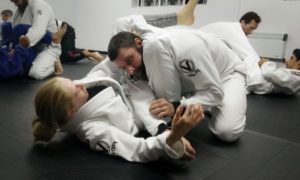
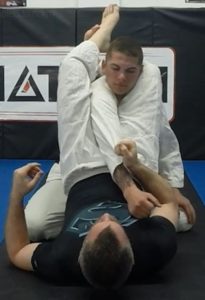
- When you want to move your opponent’s position relative to yours, you can move them, move yourself, or both. ‘Both’ is usually the optimal answer. Beginners tend to try too hard to just push the other person away without moving themselves.
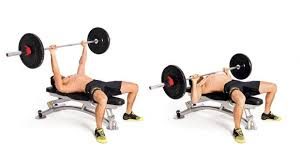
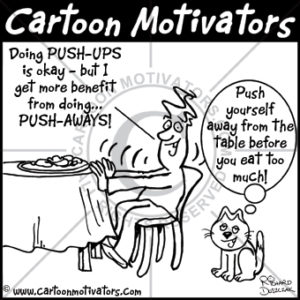
Awareness / decision making
You can’t be strong everywhere at the same time. At any time, certain moves will be easier to do than others based on your body positioning and the positioning of your opponent. So this is like a game of rock, paper, scissors; deciding to do the right technique at the right time can be more important than the correctness and precision of the technique. You have to be able to recognize where you and your opponent are strong and weak at any given moment.
- If you put a lot of weight on your left side, your right side will be light.
- If you stand really tall, it’s hard to snap you down, but easy to go for a shot on the legs. If you take a very low stance, it’s hard to shoot on your legs, but easy to snap you down
- If you’re on top of mount, if your knees are pinched tight, it’s hard for the opponent to pull guard, but easier for them to try to roll you over. If your knees are wide, it’s hard for them to roll you over, but easier for them to pull guard.
Alignment
You want your body to be properly aligned. That means that you have symmetry between your left and right sides, and you’re not twisted or bent. If you are misaligned, the first thing that you should do is figure out how to re-align yourself. If your opponent is aligned, the first thing you should do is figure out how to misalign them.
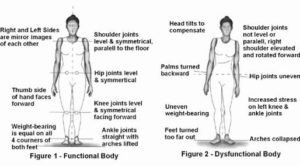
- Don’t get suckered in to getting stuck on any one technique or grip. You might put your hands on the opponent’s body in a particular spot, and as they move around, if you keep your hands there, you’ll end up misaligning yourself. In this case, let go and move them somewhere else so you stay aligned.
- When you want to go for a sweep, you usually want to cause a tilt in your opponent’s body (one shoulder higher than the other). If both of the opponent’s legs are on the ground, and their shoulders are tilted, then they are bent sideways in an off-balance position, and the only way for them to re-align themselves is to fall over.
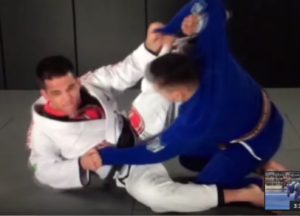
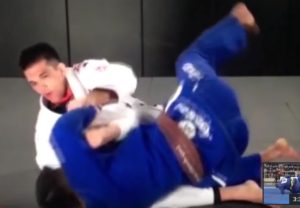
- Conversely, when you’re on top, you want to make sure your shoulders are level.
The opposite
Whatever you do to your opponent, they’re probably going to do back. For example, if you push them, they’re going to push back in order to maintain the position. Therefore, if you want to push them, you should actually pull them first. Then they’ll pull back and it will be easy to go with their energy and push them.
If someone is pushing you, you probably shouldn’t push back. That’s wasting your energy going force against force. Instead, you should go with their energy and pull them and turn to get out of their way.
Hips and legs for power
Hip extension (like when you finish an armbar) and leg extension (like doing a leg press) are the strongest movements that a human can do. Whenever possible, use these movements.
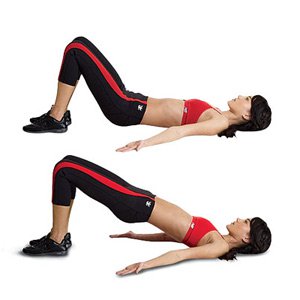
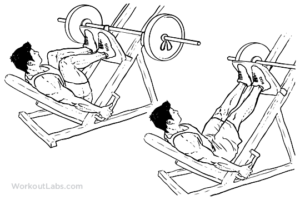
Leverage:
- When you want to extend or flex a joint, you should pull or push on the end of the limb. e.g.
- When doing an armbar, pull their arm at their hand, not on the forearm.
- When doing a guillotine or the seatbelt from back control, grab your own hand, not your wrist.
- When doing De La Riva guard or an ankle pick, you grab the ankle right at the heel, not higher on the calf.
- When pulling someone’s head down for a snap down / guillotine, etc., pull at the crown of their head where they’d wear a hat, not at the neck.
Connection:
- This is a complex topic. See ‘SBG, & the Evolution of BJJ Instruction Rickson’s Connection Principle | SBG Video Podcast Episode 7’ for more:
https://www.youtube.com/watch?v=QGB5VSXsIXE - This is my take on connection.
Imagine you want to push a heavy door open. You wouldn’t do a bench press motion with your arm to open it. Instead, you’d put your hand on the door, tense/stiffen your arm so there’s no slack, then lean forward to open it with your weight. When your core moves forward one inch, the door moves forward one inch as well, so there is a strong connection between your core and the door, through your arm. If your arm was a limp noodle, then you’d lean forward and smash your face into the door.
When you want to move the other person, you want to figure out how to create a connection between them and your weight(if you’re on top), or between them and your hip extension or leg press type of movement (if you’re on the bottom).
If you don’t want them to move you, then you need to remove the connection.
In a sense this is ‘invisible’ jiu-jitsu because it’s hard to see when somebody tenses their body in the right way.
Open / closed elbow
- You generally want your elbows to be close to your ribs, and you want your opponent’s elbows to be far away from their ribs. When your elbow is far away from your ribs, your arm is isolated and more open to attack. See ‘Ryan Hall The Open Elbow – Concepts, Fundamentals, Kimura & the Omoplata’ for more:
https://www.youtube.com/watch?v=9mRsqvRduHY
Base
- When you’re on top, your base is your connection with the ground. It needs to be constantly revised as your opponent pushes and pulls you. If you feel yourself losing your balance, you need to put some part of your body on the ground in the direction you’re falling towards. Ideally, this would be one of your knees or feet, but it can also be your hand, elbow, or even head.
- When you’re on the bottom, you need to have awareness of where the opponent has a post / connection with the ground. When trying to sweep them, take them towards where they do not have a post. To prevent them from making a post, control any of their limbs that they could use to post out. e.g. when sweeping to your opponent’s right side, you almost always want to have control over their right arm.
See ‘BJJ Scout: Rodolfo Vieira Takedown Study Part 1 – A Study of Planes’ for more on this. https://www.youtube.com/watch?v=GgkNZeoVSG0
Grips
- When you want to break somebody’s grip:
- Grab on their hand as close as you can to the fingers, rather than at the wrist
- Get your core as close as you can to their fingers; and get their fingers far as you can from their core. Whoever has their core closest to the grip has the advantage
- The weak point in a grip is where the thumb and 4 fingers meet. So you always want to pull the opponent’s hand in the opposite direction.
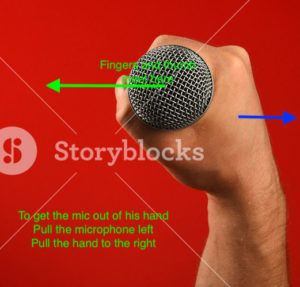
-
- Try and bend or twist their wrist joint, which will weaken their grip. In the video below ‘Josh Barnett, Double Wrist Lock: Jiu-Jitsu Magazine, Issue #32.’, you can see that Barnett is grabbing the hand instead of the wrist, and giving it a twist. https://www.youtube.com/watch?v=FhgOed0v9OI
- When it comes to maintaining your own grip, grip gently most of the time to conserve energy. Only grip hard when the opponent is actively trying to break your grip. If you’re gripping the sleeve and the opponent tries to rip their arm back, keep a relaxed grip and just allow your arm to go forward, rather than gripping super hard and not letting your arm move at all. Try to keep your wrist straight.
Bottom game
- When you’re on the bottom of guard, you should look to sweep, submit, or stand up
- When you’re on the bottom, you usually want to be on your side, vs being flat on your back. This is because you can push and pull strongest directly in front of you. When you’re flat on your back, you’re pushing straight up against gravity. Also, when you’re flat on your back, if you want to do a hip extension, your head will hit the ground and you have nowhere to go. If you’re sideways, you can do a hip extension and move your head back, even if your hips can’t go forward.
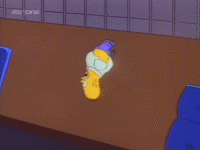
- When you’re on the bottom, it’s important to have an accurate understanding of where your opponent’s weight is at any given time, and push him more in that direction.
- If his weight is to your left, push him more left
- If his weight is centered, then push him left, and then you know he’ll push back to the right, so you can be ready to push him to the right
Top game
- When you’re on top, trying to put a lot of pressure on your opponent, put your body in extension so you become like a bowling ball. This minimizes the surface area that you put on your opponent, which focuses your weight into one spot. Think about how a 10 pound bowling ball would feel much worse on your chest than a 10 pound blanket. Also think about how if you were to push on a blanket, the blanket would naturally make a pocket for your hand that would allow you to move the blanket. If you pushed on a bowling ball and it spun a little, your hand would slip right off.
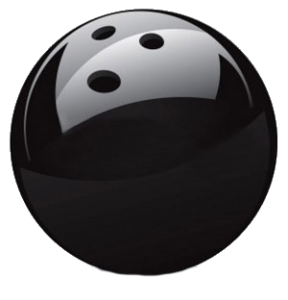
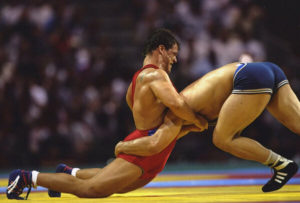
Miscellaneous
- Where the head goes, the body follows.
- You usually want to keep your head free (e.g. by blocking your opponent from cross-facing you or putting their forearm across your neck).
- If you’re on the bottom of mount, you usually want to bridge the opponent to the side their head is on, because more weight is on that side.
- When you’re on the bottom of butterfly guard trying to do a hook sweep, you usually want to sweep them to the side their head is on, for the same reason.
- It’s better to be facing your opponent when they’re not facing you. So you’d always like to move towards their side or back. In order to get to their side or back, you need to be able to go under or around their arm on that side, e.g. with an underhook or arm drag.